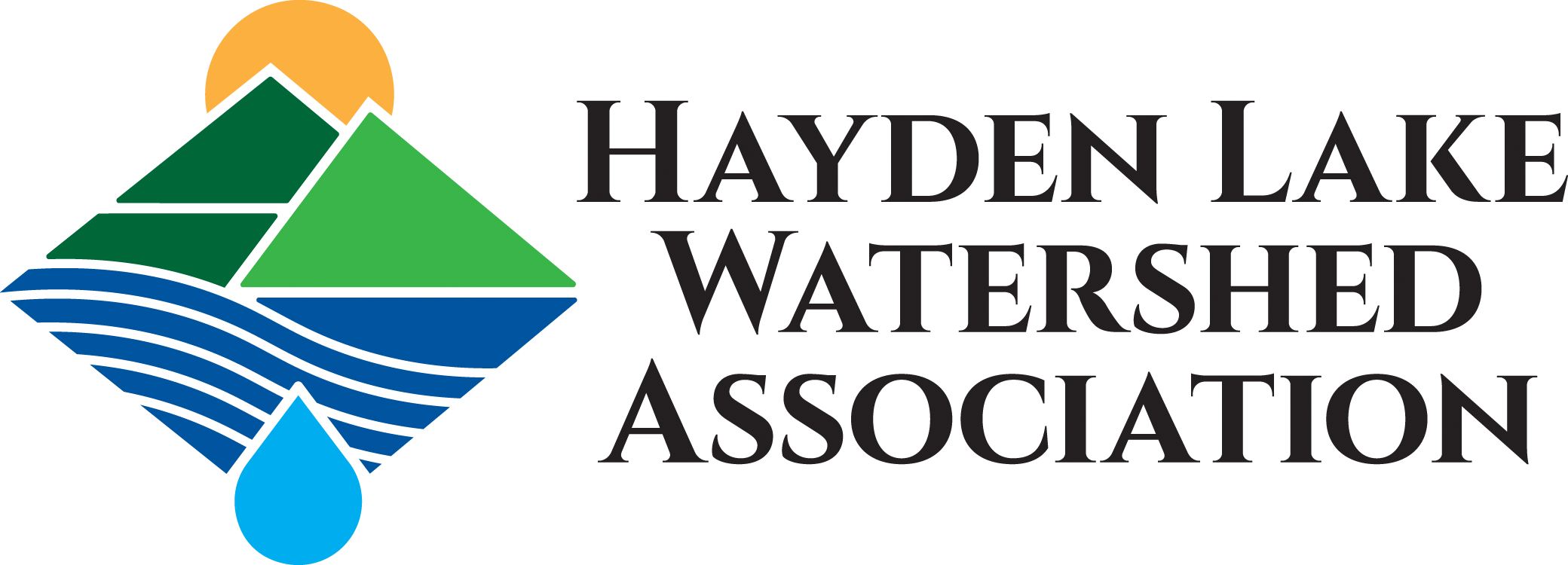Phosphorous
You may have heard over the years that phosphorous can be a negative influence on the water quality of lakes and streams. Certainly the presence of too much phosphorous in the water of Spokane River has a negative impact on the waters of Long Lake, an impoundment of the river in Washington. As remote as that problem seems to you living around Hayden Lake, if you are served by the sewer, it is quite likely going to double your sewer fees.
So what is phosphorous and why all the fuss about it in the Spokane River, and, to a lesser extent in Hayden Lake? Phosphorous is an element of matter, like carbon, oxygen, hydrogen, iron, and some one-hundred other elements, whose basic structure is the atom. Phosphorous does not exist by itself in the natural world, but rather combines with other atoms, typically oxygen, to form phosphate. The soda you may have been sipping on contains a large quantity of phosphoric acid, which is a loose association of hydrogen ions and phosphate in water. The term phosphorous then refers to any compound that contains the atom, but again, in the natural world, this is primarily phosphates attached to carbon based organic matter or soil particles. There are two classes of these phosphates, those that enter any solution of water at the range temperatures and acidity found in lakes, and those attached to particles that require high temperature and/or acidity to enter the solution. Only a small part of the phosphate present readily enters a water solution under the normal range of conditions. However, this small fraction is difficult to measure, and living systems like algae have devised chemical means of salvaging phosphorous that is bound to soil particles. For these reasons total phosphorous is typically the value measured and on which goals are set.
Those of you familiar with lawn or garden fertilization know that nitrogen (actually the nitrate), phosphorous (actually the phosphate), and potassium (NPK) are the primary active ingredients in most fertilizers. Plants, whether the grass of your lawn, trees in the forest, vegetables in the garden, or algae, which are microscopic plants floating in the lake, require several elements in various compounds to grow. However, nitrogen, potassium, and phosphorous are those most likely to be limited in the soil and therefore, limit the amount of plant growth. Some soils lack nitrogen but have plenty of phosphorous or potassium, while other soils may lack either of these two elements and have plenty of nitrogen. In the lake waters of North Idaho, scientific research has demonstrated that phosphorous (phosphate) is the most limiting of all required elements to plant (algae) growth.
Since phosphorous is naturally being mobilized by erosion from the land and carried into the lake by water, this limitation of algal growth is a balance: too much phosphorous results in too much algal growth. Excess algal growth becomes a nuisance when the algae dies and decays using up the dissolved oxygen required by fish and other lake organisms. This scenario is exactly what is occurring in Washington’s Long Lake. If too little phosphorous is available, algal growth is limited. Since algae convert the sun’s energy to chemical energy that is used by most of the living creatures in the lake, too little phosphorous is a problem. Dams on the tributaries to British Columbia’s Kootenay Lake have limited its phosphorous content in the lake causing problems to its fishery.
So where do we stand with phosphorous in Hayden lake? Hayden Lake’s phosphorous is slightly above, three-quarters of a microgram per liter of water, the concentration believed to be optimal to both maintain its clear oxygenated waters and its trout fishery. To maintain the water quality of the lake, we need to reduce phosphorous inputs to reach a goal of 7 microgram phosphorous per liter of water. How can these reductions be achieved? We must be vigilant that our sewage effluent, rich in phosphorous, does not enter the lake. Remember that soda you sipped? It does not stay with you nor does all the phosphate that it and other foods contain. It enters the sewage stream. The replacement of Mivoden’s outdated sewage system with a land application system set back nearly a mile from the lake is a large step forward. Those owning on-site septic systems should be aware that these systems, which have a limited functional lifespan, are properly operating and treating their waste. We must be vigilant concerning land disturbance activities in the watershed. Soil particles have phosphorous attached, and when these particles are washed into the lake that phosphorous is potentially available for algal growth. Whether it is the Forest Service or Highway District building a road or a resident developing their lake lot, vegetation and soil disturbance can result in additional phosphorous entering the lake. Just the act of removing the vegetation from a lake lot, is estimated to double the amount of phosphorous erosion and yield from that lot. Thus, it is important to limit vegetation removal to that necessary and to apply prescribed best management practices like erosion fence, storm water retention and treatment, and infiltration of water back to the soil to protect the lake. Finally there are a number of other routine activities that lake shore and watershed land owners might do on their property that could increase phosphorous yield to the lake’s waters. The Association has provided a homeowners guide available on this web site to provide you the best recommended methods of curtailing the phosphorous loading impact and others you may have on the lake.
